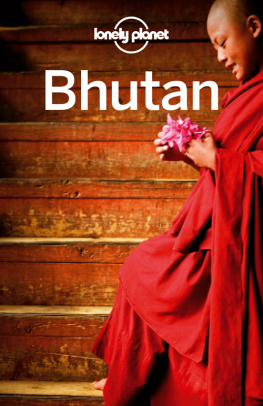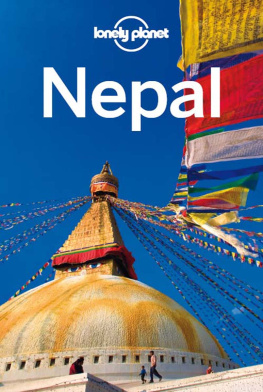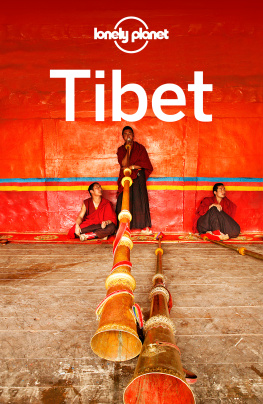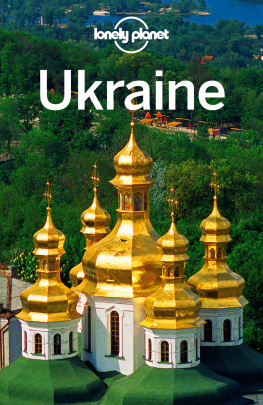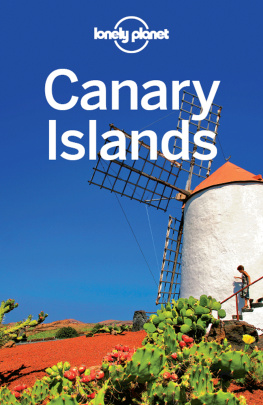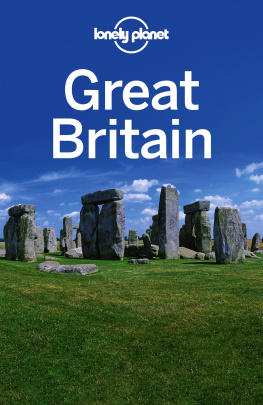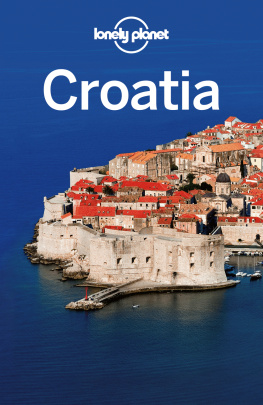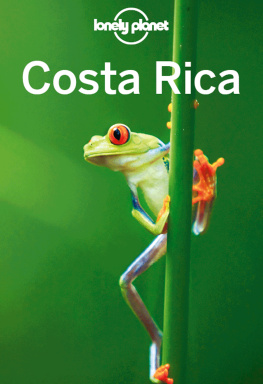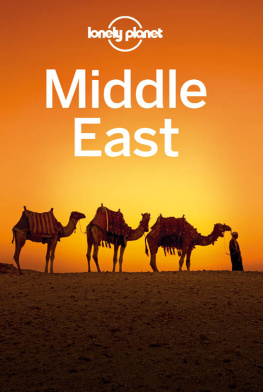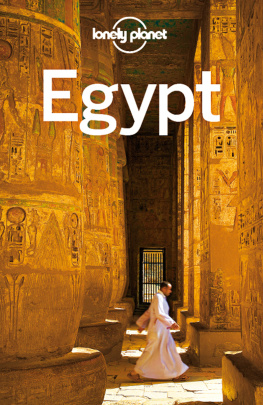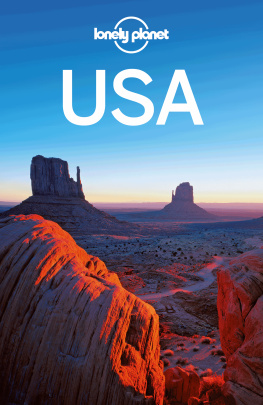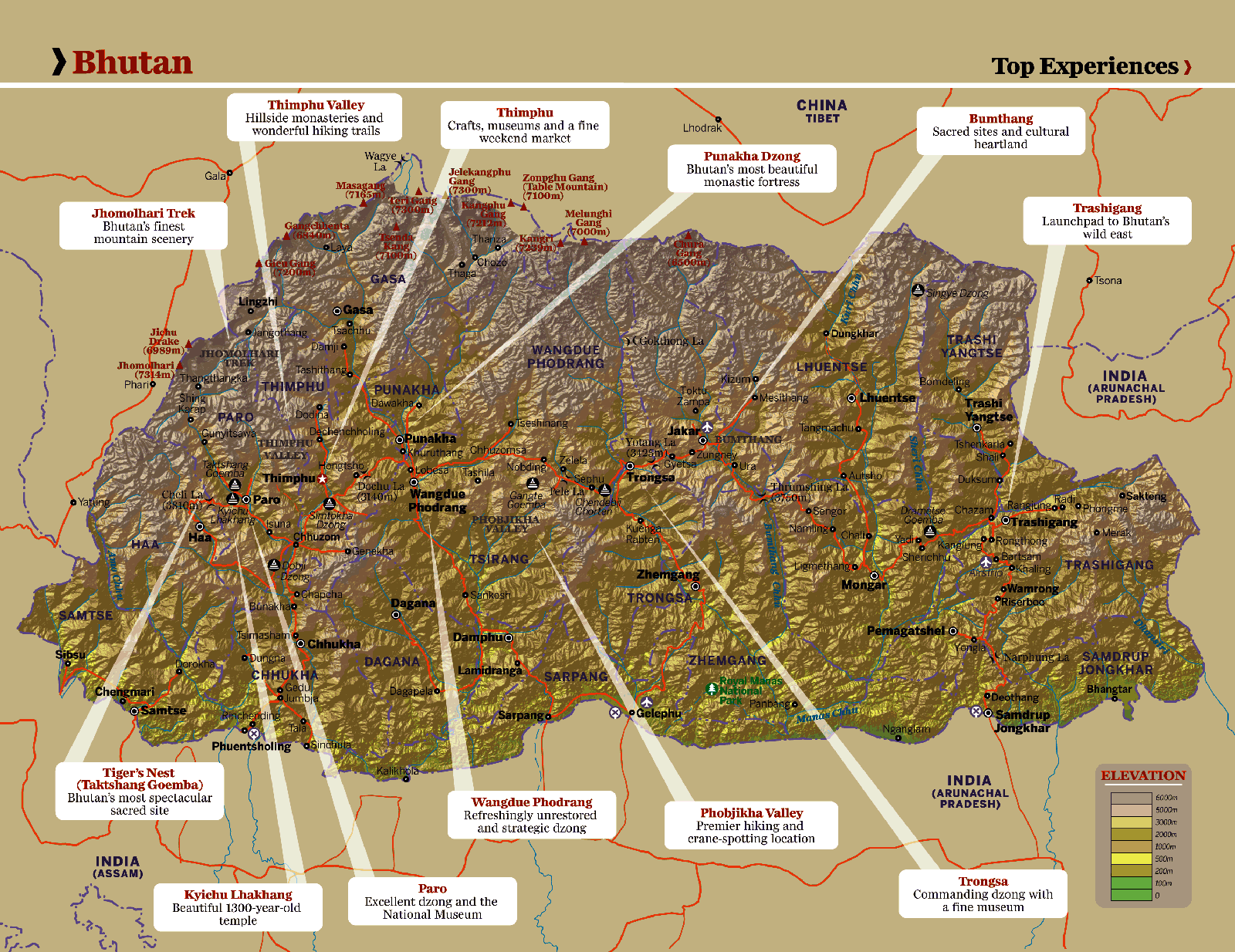GETTING THE MOST OUT OF LONELY PLANET MAPS
E-reader devices vary in their ability to show our maps. To get the most out of the maps in this guide, use the zoom function on your device. Or, visit http://media.lonelyplanet.com/ebookmaps and grab a PDF download or print out all the maps in this guide.
Welcome to Bhutan
Bhutan, the Land of the Thunder Dragon, is no ordinary place. It is a Himalayan kingdom replete with myths and legends, where the best of traditional culture thrives and the latest global developments are enthusiastically embraced.
Low Volume, High Value Tourism
Tourism in Bhutan is unique and the Bhutanese pride themselves on a sustainable, ecofriendly approach in line with the countrys popular philosophy of Gross National Happiness. Firstly, to bust a myth: there is no limit to the number of tourists. Visitors famously have to pay a minimum tariff of US$200 per day (rising to US$250 in 2012), making it appear as one of the worlds most expensive countries to visit. However, this fee is all-inclusive accommodation, food, transport and an official guide are all provided. Not only that, but your local guide will reveal the countrys amazing landscape and Buddhist heritage, and will also introduce you to the everyday charms of the Bhutanese. You dont have to travel in a large group and you can arrange your own itinerary. What you wont find in Bhutan is crowded backpacker-style independent travel. This is Nepal for the jet set.
Surprising Bhutan
Bhutan holds many surprises. This is a country where buying cigarettes is illegal, where the rice is red and where chillies arent just a seasoning but the main ingredient. Its also a deeply Buddhist land, where schoolkids wear the gho and kira (traditional male and female clothing, respectively) where giant protective penises are painted beside the entrance to many houses, and where Gross National Happiness is deemed more important than Gross National Product. And while it visibly maintains its Buddhist traditions, Bhutan is not a museum nor is it a nation of otherworldly ascetics shunning the rest of the world. You will find the Bhutanese well-educated, fun loving and vibrant.
Shangri La?
So why spend your money to come here? First off there is the amazing mountainous landscape, where snowcapped peaks rise out of primeval forests in every shade of green. Taking up prime positions in this landscape are the fantastic monasteries and incredible fortresslike dzongs. The unique Buddhist architecture embodies the traditional Buddhist culture and sets the scene for spectacular religious dance festivals. Then there are the textiles and handicrafts, outrageous archery competitions, spectacular trekking trails and stunning flora and fauna. All this sets Bhutan aside as the last remaining great Himalayan kingdom.
When you do visit Bhutan, you will become one of the few who have experienced the charm and magic of one of the worlds most enigmatic countries the last Shangri La and youll be playing your part in this medieval kingdoms efforts to join the modern world, while steadfastly maintaining its distinct and remarkable cultural identity.
TOP Experiences
Tigers Nest (Taktshang Goemba)
Bhutans most famous monastery, Tigers Nest (Taktshang Goemba; ), is one of its most venerated religious sites. Legend says that Guru Rinpoche flew to this site on the back of a tigress to subdue a local demon; afterwards, he meditated here for three months. This beautiful building clings to the sheer cliffs soaring above a whispering pine forest. The steep walk to the monastery is well worthwhile, providing tantalising glimpses of the monastery, views of the Paro valley and splashes of red-blossom rhododendrons.
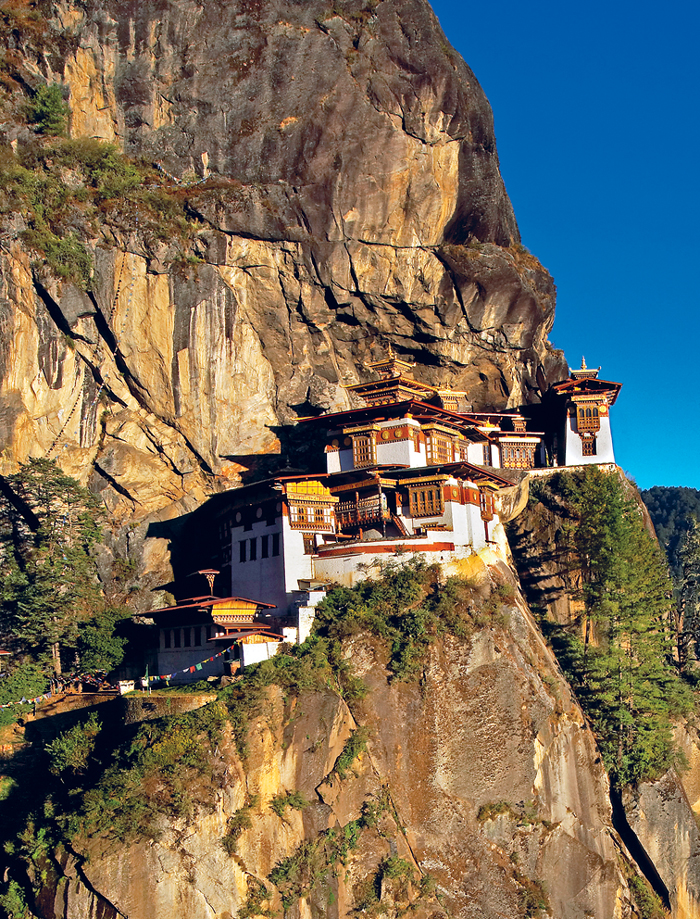
JOHNNY HAGLUND
Terrific Tsechus
Most of the dzongs and goembas have annual festivals featuring mesmerising dance dramas. The largest of these festivals is the tsechu with dances in honour of Guru Rinpoche. The dances are performed by monks and lay people dressed in colourful costumes, and the dancers take on aspects of wrathful and compassionate deities, heroes, demons and animals. During the dances, atsara (clowns) mimic the dancers and perform comic routines and even harass the audience for money in exchange for a blessing with the wooden phallus they carry!
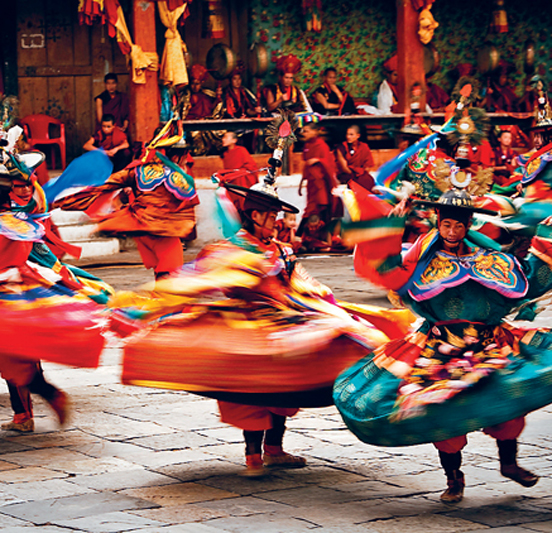
Tsechu at Wangdue Phodrang Dzong
GAVIN GOUGH
Mountain Treks
Bhutans treks () are physically demanding but hugely rewarding. They generally reach high altitudes and take you through remote regions. You will be expertly guided during your trek, negotiating suspension bridges, snow or leeches! Thankfully, your pack will be carried by ponies. Trekking takes you beyond the roads and the reach of many aspects of modernisation, and meeting traditionally dressed locals will be a highlight of the experience. Above the forests, these hardy farmers tend their crops and animals according to century-old traditions.

Jhomolhari trek
NICHOLAS REUSS
Archery
Bhutans national sport of archery (datse; ) is exhilarating and entertaining to watch, with competitions held across the country throughout the year. There are two classes of competition: one for the traditional bamboo bows and another for the space-age carbon-fibre bows that propel arrows at astonishing speeds. The targets seem impossibly tiny and the distance immense and yet the target is hit quite regularly. Narrow misses, competitive banter, ritual singing and dancing accompany the whoosh of arrows and hoots of delight as the competition heats up.
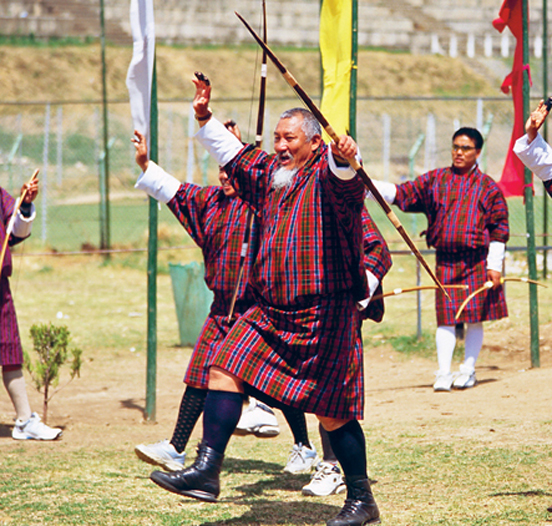
Archery tournament, Thimphu
LINDSAY BROWN
Buddhist Painting
The best place to see Buddhist murals and frescoes is inside the dzongs, goembas and lhakhangs (). Stories are told, mandalas mesmerise and major figures are represented, including the Guardians of the Four Directions, Sakyamuni Buddha and Guru Rinpoche. Another common and typically Bhutanese subject depicts the Four Friends (Thuenpa puen shi), which illustrates the concept and harmony of teamwork and mutual respect between an elephant, monkey, rabbit and bird. Thimphu is the best place to to see and purchase traditional and contemporary painting.
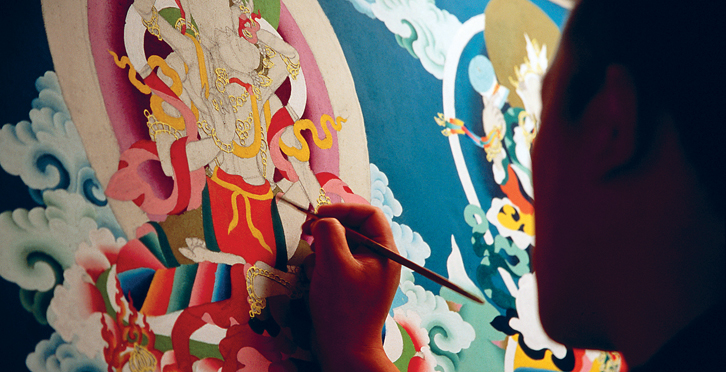
LINDSAY BROWN
Punakha Dzong
Superbly situated where two rivers converge, Punakha Dzong () is postcard perfect and serenely monastic. Built by the Zhabdrung in 1637, Punakha Dzong is the winter home of the Je Khenpo and is the venue for the coronation of kings of Bhutan. Visit in spring to see the famous jacaranda trees splash lilac flowers down the whitewashed walls and red-robed monks wandering on a sea of purple petals. The fortress-thick walls are cold and silent one moment and then warmed with the echoes of giggles in another as a horde of young monks head off for a meal.

